As a nurse, understanding the nursing care plans and nursing diagnosis for anaphylactic shock is crucial to providing the best care for patients. This guide provides a comprehensive overview of anaphylactic shock nursing care plans and nursing diagnosis, including common symptoms and treatment options.
What is Anaphylactic Shock?
Anaphylactic Shock also known as distributive shock, or vasogenic shock is a life-threatening allergic reaction that is caused by a systemic antigen-antibody immune response to a foreign substance (antigen) introduced into the body. It is characterized by smooth muscle contraction, massive vasodilation, and increased capillary permeability triggered by a release of histamine. It occurs within seconds to minutes after contact with antigenic substances and progresses rapidly to respiratory distress, vascular collapse, systemic shock, and possibly death if emergency treatment is not initiated. Causative agents include severe reactions to a sensitive substance such as a drug, vaccine, food (e.g., eggs, milk, peanuts, shellfish), insect venom, dyes or contrast media, or blood products.
Nursing Care Plans & Management
Nursing care plan and management for patients with anaphylactic shock involve a comprehensive approach to ensure patient safety and stabilization.
Nursing Problem Priorities
The following are the nursing priorities for patients with anaphylactic shock:
- Ensure a clear airway.
- Monitor and assess breathing.
- Monitor and assess circulation.
- Administer epinephrine promptly.
- Provide fluid resuscitation as needed.
- Administer prescribed medications.
Nursing Assessment
Assess for the following subjective and objective data:
- Chest tightness
- Cyanosis
- Coughing
- Dyspnea
- Hoarseness
- Respiratory distress
- Stridor
- Tachypnea
- Use of accessory muscles
- Wheezing
- Bronchospasm
- Hypotension
- Shock
- Shortness of breath
- Tachycardia
- Cyanosis; pallor
- Decreased central venous pressure (CVP)
- Decreased peripheral pulses
- Decreased pulmonary pressures
- Dizziness
- Hypotension
- Oliguria
- Prolonged capillary refill
- Restlessness
- Inaccurate follow-through of instructions
- Inability to identify allergens
- Recurrent allergic reactions
Assess for factors related to the cause of anaphylactic shock:
- Bronchospasm
- Bronchoconstriction
- Facial angioedema
- Laryngeal edema
- Ventilation-perfusion imbalance
- Generalized vasodilation (decreased preload and afterload)
- Increased capillary permeability (fluid shifts)
- Lack of exposure
- Lack of recall
- Misinterpretation of information
Nursing Diagnosis
Following a thorough assessment, a nursing diagnosis is formulated to specifically address the challenges associated with anaphylactic shock based on the nurse’s clinical judgement and understanding of the patient’s unique health condition. While nursing diagnoses serve as a framework for organizing care, their usefulness may vary in different clinical situations. In real-life clinical settings, it is important to note that the use of specific nursing diagnostic labels may not be as prominent or commonly utilized as other components of the care plan. It is ultimately the nurse’s clinical expertise and judgment that shape the care plan to meet the unique needs of each patient, prioritizing their health concerns and priorities.
Nursing Goals
Goals and expected outcomes may include:
- The client will maintain an effective breathing pattern, as evidenced by relaxed breathing at a normal rate and depth and the absence of adventitious breath sounds.
- The client will demonstrate improved ventilation as evidenced by an absence of shortness of breath and respiratory distress.
- The client will display hemodynamic stability, as evidenced by strong peripheral pulses; HR 60 to 100 beats/min with regular rhythm; systolic BP within 20 mm Hg of baseline; urine output greater than 30 ml/hr; warm, dry skin; and alert, responsive mentation.
- The client and significant others will verbalize understanding of allergic reactions, their prevention, and management.
- The client and significant others will verbalize understanding of the need to carry emergency components for intervention, the need to inform health care providers of allergies, the need to wear a medical alert bracelet/necklace, and the importance of seeking emergency care.
Nursing Interventions and Actions
Therapeutic interventions and nursing actions for patients with anaphylactic shock may include:
1. Promoting Effecting Breathing Patterns
Ineffective breathing pattern can occur in patients with anaphylactic shock due to bronchospasm, bronchoconstriction, laryngeal edema, and facial angioedema. These conditions can cause the airways to narrow and the tissues in the throat and face to swell, making it difficult to breathe. This can lead to shortness of breath, wheezing, and in severe cases, respiratory failure. After the administration of appropriate emergency treatments, such as epinephrine and antihistamines, attention should be focused on supporting the patient’s respiratory function. Prompt recognition of any signs of respiratory distress, such as wheezing or shortness of breath, is crucial for timely intervention and the prevention of respiratory compromise.
1. Assess the respiratory rate, rhythm, and depth, and note for changes such as coughing, dyspnea, increased shortness of breath, stridor, tachypnea, wheezing, and use of accessory muscles.
Histamine is the primary mediator of anaphylactic shock. It causes smooth muscle contraction in the bronchi as a result of the stimulation of histamine receptors (H1). As the anaphylactic reaction progresses, the client develops dyspnea, wheezing, and increased pulmonary secretions. Vascular to interstitial fluid shifts contribute to respiratory distress through swelling in the upper airways.
2. Auscultate breath sounds.
By auscultation, wheezing can be heard over the entire chest. But when the bronchial constriction worsens, there will be decreased audible wheezing and respiratory distress will heighten. Therefore it is also important to auscultate for decreasing air movement.
3. Assess the client’s anxiety level.
Life-threatening situations such as respiratory distress and shock can produce elevated levels of anxiety within the client.
4. Assess the client for the sensation of a narrowed airway.
A systemic antigen-antibody immune response can result in severe bronchial airway narrowing, edema, and obstruction. As the airway gets narrow, the client demonstrates increase respiratory effort.
5. Observe for changes in the color of the skin, tongue, and mucosa.
Bluish discoloration of these body parts is considered a medical emergency.
6. Assess the presence of angioedema.
Angioedema is characterized by the swelling of the skin, lips, tongue, hands, eyelids, and feet.
7. Monitor oxygen saturation and arterial blood gases.
Pulse oximetry is used to monitor oxygen saturation. It should be kept at least 90% or higher. As shock progresses, aerobic metabolism stops and lactic acidosis occurs, resulting in an increased level of carbon dioxide and decreasing pH.
8. Maintain a calm, assured manner. Assure the client and significant others of close, continuous monitoring that will ensure prompt intervention.
The staff’s anxiety may be easily perceived by the client. The client’s feeling of stability increases in a calm, non-threatening environment. The presence of a trusted person can help the client feel less threatened.
9. Provide assurance and alleviate anxiety by staying with the client during acute distress.
Air hunger can produce an extremely anxious state that leads to rapid and shallow respirations.
10. Instruct the client to breathe slowly and deeply.
Focus breathing may help calm the client, and the increased tidal volume facilitates improved gas exchange.
11. Position the client upright.
This position provides oxygenation by promoting maximum chest expansion and is the position of choice during respiratory distress.
12. Administer IV fluids as ordered.
Hypotension caused by vasodilation and distributive shock responds to fluid resuscitation.
13. Administer oxygen as prescribed.
Oxygen increases arterial saturation. Oxygen saturation that is less than 90% results in tissue hypoxia, acidosis, dysrhythmias, and changes in the level of consciousness.
14. Administer medications as ordered.
See Pharmacologic Management
15. Maintain a patent airway. Anticipate an emergency intubation or tracheostomy if stridor occurs.
Respiratory distress may progress rapidly. If laryngeal edema is present, endotracheal intubation will be required to maintain a patent airway.
Home care:
16. Provide information about emergency medications and plans that should be considered should a crisis reoccur.
Adequate preparation decreases risks.
17. Assist the client and/or family in identifying factors that precipitate and/or exacerbate crises.
Knowledge can facilitate prompt intervention.
2. Enhancing Gas Exchange
Enhancing gas exchange is a vital aspect of managing patients with anaphylactic shock, as compromised respiratory function is a hallmark of this life-threatening condition. Anaphylactic shock can lead to severe respiratory distress, bronchospasm, and swelling of the airways, which can significantly impair the exchange of oxygen and carbon dioxide. Timely interventions aimed at optimizing gas exchange are crucial to improve oxygenation and prevent further complications. It is important to note that while enhancing gas exchange is a priority, the underlying cause of anaphylactic shock must also be addressed.
1. Note respiratory rate, frequency, depth and ease breathing.
Increased respiratory effort may show the extent of the level of hypoxemia and useful in evaluating the degree of compromise.
2. Auscultate breath sounds.
By auscultation, wheezing can be heard over the entire chest. But when the bronchial constriction worsens, there will be decreased audible wheezing and respiratory distress will heighten. Therefore it is also important to auscultate for decreasing air movement.
3. Assess the level of consciousness/mental changes.
Anxiety or restlessness, confusion, and headaches are other common effects of mild hypoxemia.
4. Monitor oxygen saturation and arterial blood gasses.
Pulse oximetry is used to monitor oxygen saturation. It should be kept at least 90% or higher. As shock increases, aerobic metabolism stops and lactic acidosis happens, resulting in the increased level of carbon dioxide and decreasing pH.
5. Maintain the patency of the airway.
Airway obstruction may alter ventilation and impairs gas exchange.
6. Elevate head of bed; Provide airway adjuncts and suction as indicated.
This position promotes adequate oxygenation; Airway adjuncts such as oropharyngeal airway (OPA) and nasopharyngeal airway (NPA) are designed to maintain airway patency, allowing spontaneous respiration or facilitating bag-mask ventilation.
7. Provide oxygen therapy correctly as indicated.
Oxygen therapy will maintain PaO2 above 60 mm Hg.
8. Encourage adequate rest and limit activities to within client’s tolerance.
This will promote calm and restful environment and will limit the client’s oxygen needs.
9. Administer medications as ordered (corticosteroids, bronchodilators, antihistamines).
Used to prevent allergic reactions / inhibit histamine release, reduces airway spasm, and inflammation.
3. Managing Decrease in Cardiac Output
Decreased cardiac output can occur in patients with anaphylactic shock due to generalized vasodilation and increased capillary permeability. These conditions can cause blood vessels to dilate, which can lead to a decrease in blood pressure and cardiac output. This can result in decreased blood flow to vital organs, including the heart, and can lead to shock and organ failure if not treated promptly. Nursing interventions focus on optimizing cardiac function and tissue oxygenation.
1. Assess the client’s HR and BP, including peripheral pulses.
Severe hypovolemia and hypotension result from the intense vasodilation; Pulses are weak with decreased stroke volume and cardiac output.
2. Assess the client’s ECG for dysrhythmias.
Cardiac dysrhythmias may occur from the low perfusion state, acidosis, or hypoxia.
3. Assess the client’s level of consciousness.
Early signs of cerebral hypoxia are restlessness and anxiety while confusion and loss of memory occur in the late stage.
4. Assess the skin temperature and signs of any cyanosis.
Massive vasodilation and increased capillary permeability can lead to decreased peripheral blood flow and ineffective tissue perfusion.
5. Monitor the client’s urine output.
The renal system compensates for low blood pressure by retaining Water. Oliguria is a classic sign of inadequate renal perfusion.
6. Monitor the client’s central venous pressure (CVP), pulmonary artery diastolic pressure (PADP), pulmonary capillary wedge pressure, and cardiac output/cardiac index.
Hemodynamic parameters provide information aiding in the differentiation of decreased cardiac output secondary to the fluid deficit (fluid shifts) or fluid overload (aggressive IV therapy). CVP is used as an estimate of right ventricular preload; pulmonary capillary wedge pressure and pulmonary artery diastolic pressure indicate left-sided fluid volumes.
7. Place the client with the head of the bed flat, with the trunk horizontal and the lower extremities elevated 20 to 30 degrees with the knees straight.
This position promotes optimal venous return.
8. Administer volume expanders as ordered.
Volume expanders are used to correct hypovolemia.
9. Administer parenteral fluids using a large-bore needle. Avoid fluid overload in older clients.
Volume therapy is essential to maintain sufficient filling pressures and adequate cardiac output.
10. If a blood transfusion is causing the reaction, immediately terminate the infusion and keep the vein open using a normal saline solution then notify the physician.
These safety measures must be done to eliminate further complications.
11. Administer medications as ordered.
See Pharmacologic Management
4. Initiating Health Teachings and Patient Education
When initiating health teachings, nurses should start by explaining what anaphylactic shock is and how it occurs. It is crucial to emphasize the importance of recognizing early signs and symptoms such as difficulty breathing, swelling, hives, and a rapid heartbeat. Patients need to understand that prompt recognition of these symptoms and seeking immediate medical assistance is vital to prevent further complications. Patient education should also focus on identifying triggers that can precipitate an anaphylactic reaction. This may involve discussing common allergens such as certain foods, medications, insect stings, or environmental factors. Encouraging patients to maintain an allergen-free environment and carry an epinephrine auto-injector at all times can significantly reduce the risk of severe reactions.
1. Assess the client’s knowledge of the condition and exposure to allergens.
Present knowledge of the client provides a baseline for immediate treatment.
1. Explain factors that may increase the risk of anaphylaxis (e.g., certain drugs, blood products, insect venom, food, and environmental control measures to be established).
The information allows the client to take control and make needed lifestyle modifications. For example, if the trigger is pollen, the client will need to shower, change and wash clothes after they’ve spent time outdoors.
2. Instruct the client with known allergies to wear medical alert identification.
In case of an emergency, the healthcare provider will be aware of this medical history.
3. Instruct the client or family members about factors that can precipitate a recurrence of shock and ways to prevent or avoid these precipitating factors.
The client is at high risk for developing anaphylactic shock in the future if exposed to the same antigenic substance and needs self-help information to prevent anaphylactic shock.
4. Instruct the client in the use of insect sting kits (containing a chewable antihistamine), epinephrine in prefilled syringes, and instructions for use as appropriate, and indicate how they are to be obtained.
In a situation in which the client cannot completely avoid exposure to allergens, he or she needs to have access to emergency treatment resources for immediate administration. These can be self-administered or given by someone else.
5. Notify the client or significant others to divulge in the medical history all their allergies (e.g., blood products, food, pollen, latex, medications, contrast dyes, dust mites).
Safety measures reduce potential injury. Healthcare providers need to be aware of the history of the reaction, causative factors, symptoms, severity, and the level of the treatment period.
6. Provide instruction in self-care measures to be performed at home during the initial attack.
During initial attacks, the client should be prepared to stay calm and follow safety instructions; The EpiPen is injected into the thigh muscle.
- During an episode of a drop in blood pressure (dizziness), lie down with the feet elevated.
- During an episode of wheezing, use a prescribed inhaled bronchodilator.
- During an episode of a severe reaction, inject self with epinephrine from the kit (EpiPen).
- Minimize exposure to the trigger if possible.
- Take an oral antihistamine (Benadryl) if swallowing is intact.
- Call 911 for help, or have someone drive to the hospital before the attack increases.
7. Discuss referral to an allergist if allergens are difficult to avoid.
Skin tests are being used to identify the specific allergen. Clients may also benefit from desensitization.
5. Assessing and Monitoring for Potential Complications
Anaphylactic shock is a severe allergic reaction that can lead to various systemic complications, requiring vigilant observation and prompt intervention. Nurses must closely monitor patients to detect and manage any adverse effects that may arise. Assessing and monitoring for potential complications is a crucial component of managing patients who have experienced anaphylactic shock. Regular evaluation of vital signs, respiratory status, skin manifestations, and the possibility of delayed reactions allows healthcare providers to promptly detect and address any evolving complications.
1. Regularly assess vital signs, including blood pressure, heart rate, respiratory rate, and oxygen saturation levels.
Vital signs provide crucial information about the patient’s cardiovascular and respiratory status, helping identify any signs of instability or deterioration.
2. Monitor the patient’s level of consciousness and mental status.
Changes in consciousness or mental status can indicate inadequate oxygenation or perfusion to the brain, suggesting a worsening condition or potential complications.
3. Assess the patient’s airway and breathing for signs of respiratory distress, such as increased work of breathing, wheezing, or stridor.
Anaphylactic shock can cause airway edema, bronchospasm, or compromised breathing, necessitating prompt intervention to ensure adequate oxygenation and ventilation.
4. Evaluate skin manifestations, including hives, angioedema, or erythema.
Cutaneous symptoms are common in anaphylactic reactions and can indicate the progression or resolution of the allergic response. Monitoring skin manifestations helps in assessing the patient’s overall condition.
5. Observe for signs of cardiovascular instability, such as hypotension, tachycardia, or arrhythmias.
Anaphylactic shock can lead to severe hypotension and cardiovascular collapse. Regular monitoring allows for early detection and intervention to prevent further complications.
6. Assess for signs of gastrointestinal distress, such as nausea, vomiting, or abdominal pain. Gastrointestinal symptoms may accompany anaphylactic shock and can be indicative of systemic involvement or potential complications.
7. Monitor oxygen saturation levels through continuous pulse oximetry.
Continuous oxygen saturation monitoring helps assess the patient’s respiratory function and ensures timely interventions to optimize oxygenation.
8. Keep a close watch for potential delayed or biphasic reactions.
Anaphylactic shock can sometimes have a delayed or recurring phase, with symptoms reappearing or worsening several hours after the initial reaction. Vigilant monitoring aids in early detection and intervention.
9. Conduct laboratory investigations, such as complete blood count, coagulation profile, or serum tryptase levels, as ordered by the healthcare provider.
These laboratory tests can provide valuable information about the patient’s overall condition, aid in diagnosis, and help identify potential complications.
10. Document all assessments, observations, and changes in the patient’s condition accurately and thoroughly.
Documentation ensures a comprehensive record of the patient’s progress, facilitates communication with the healthcare team, and helps identify trends or potential concerns.
6. Administering Medications and Pharmacologic Support
Administering medications and providing pharmacologic support is of paramount importance in patients with anaphylactic shock. Anaphylactic shock is a severe and potentially life-threatening allergic reaction that requires immediate intervention. Medications, particularly epinephrine, bronchodilators, and corticosteroids, play a critical role in managing this condition and preventing further complications. Administering medications and providing pharmacologic support in patients with anaphylactic shock aims to stabilize their condition, alleviate symptoms, and prevent potential complications. These interventions, when initiated promptly and appropriately, can be lifesaving. It is essential for nurses to be knowledgeable about the indications, dosages, and administration techniques of these medications to ensure their safe and effective use.
Here is a list of medications commonly used for patients with anaphylactic shock and their respective uses:
1. Bronchodilators
Short-acting beta-agonists, such as albuterol (Ventolin), are bronchodilator medications used to alleviate bronchospasm and improve breathing in patients with anaphylactic shock. They work by relaxing the smooth muscles of the airways, facilitating better airflow.
2. Corticosteroids
Steroids stabilize the cell membrane and decrease cellular permeability, vasomotor response, and inflammation.
3. H1-receptor blockers/antihistamines
These medications block the action of histamine and decrease cellular edema. Antihistamines, such as diphenhydramine (Benadryl) or cetirizine (Zyrtec), are often administered to block the effects of histamine released during an allergic reaction. They help relieve symptoms such as itching, hives, and rash. Antihistamines are typically used as adjunctive therapy along with epinephrine.
4. Corticosteroids
Corticosteroids, such as methylprednisolone (Solu-Medrol) or prednisone, are commonly administered to reduce airway inflammation and prevent delayed or biphasic reactions. They help minimize the risk of recurrence or worsening of symptoms after the initial allergic response.
5. Epinephrine (Adrenaline)
Epinephrine is the first-line medication for anaphylactic shock. It is administered to reverse the systemic effects of the allergic reaction. Epinephrine constricts blood vessels, relaxes airway muscles, and reduces swelling, helping to alleviate symptoms such as bronchospasm, hypotension, and angioedema.
5. Glucagon
Glucagon is occasionally used in anaphylactic shock when hypotension persists despite the administration of epinephrine and fluid resuscitation. It works by increasing heart rate and myocardial contractility, thereby supporting blood pressure.
6. Intravenous Fluids
Intravenous fluids, typically isotonic crystalloids (e.g., normal saline), are administered to maintain or restore blood volume in patients experiencing hypotension due to anaphylactic shock. Fluid resuscitation helps improve perfusion and counteracts the vasodilation and fluid shift associated with the allergic reaction.
7. Vasopressors
In cases of severe anaphylactic shock with refractory hypotension, vasopressors may be used to support blood pressure. Medications like norepinephrine or dopamine can be administered via intravenous infusion to maintain adequate perfusion to vital organs.
8. Oxygen
Supplemental oxygen is administered to patients with anaphylactic shock to ensure adequate oxygenation. It can be provided through nasal prongs, face masks, or other appropriate delivery systems to maintain oxygen saturation levels within the desired range.
7. Monitoring Laboratory and Diagnostic Procedures
Monitoring laboratory studies and diagnostic procedures is paramount in patients who have had anaphylactic shock. These tests provide valuable information about the patient’s condition, aid in diagnosing anaphylactic shock, and help guide appropriate treatment and management. Regular monitoring of laboratory studies, such as complete blood count, serum tryptase levels, coagulation profile, arterial blood gas, electrolyte panel, liver function tests, renal function tests, and allergen-specific IgE testing, allows healthcare providers to assess the patient’s overall health, identify any complications, and monitor the response to treatment.
Here is a list of laboratory studies and diagnostic procedures commonly performed in patients with anaphylactic shock:
1. Complete Blood Count (CBC)
A CBC measures various components of the blood, including red blood cells, white blood cells, and platelets. It can help identify any abnormal blood cell counts or signs of infection that may contribute to or result from anaphylactic shock.
2. Serum Tryptase
Tryptase is an enzyme released by mast cells during an allergic reaction. Measuring serum tryptase levels can help confirm the diagnosis of anaphylactic shock and assess the severity of the reaction. Serial measurements may be taken, with the first obtained during the acute phase and subsequent measurements 1-2 hours and 24 hours later.
3. Coagulation Profile
A coagulation profile assesses the blood’s ability to clot. Anaphylactic shock can trigger a systemic inflammatory response that may affect the coagulation system. Monitoring coagulation parameters, such as prothrombin time (PT), activated partial thromboplastin time (aPTT), and international normalized ratio (INR), can help identify any abnormalities and guide appropriate management.
4. Arterial Blood Gas (ABG)
An ABG test measures the levels of oxygen, carbon dioxide, and acid-base balance in the arterial blood. It provides information about the patient’s respiratory status and the extent of respiratory distress or failure resulting from anaphylactic shock.
5. Electrolyte Panel
An electrolyte panel measures the levels of various electrolytes, including sodium, potassium, chloride, and bicarbonate. It helps assess the patient’s fluid and electrolyte balance, which can be affected by anaphylactic shock, fluid shifts, or medications administered during the treatment.
6. Liver Function Tests (LFTs)
LFTs assess the liver’s function and detect any liver damage or dysfunction resulting from anaphylactic shock or the administration of medications. These tests typically measure liver enzymes, such as alanine aminotransferase (ALT), aspartate aminotransferase (AST), alkaline phosphatase (ALP), and bilirubin levels.
7. Renal Function Tests
Renal function tests, including serum creatinine and blood urea nitrogen (BUN) levels, evaluate kidney function. Anaphylactic shock and associated hemodynamic instability can lead to renal impairment, so monitoring renal function is essential.
8. ECG/EKG
An electrocardiogram (ECG/EKG) records the electrical activity of the heart. It helps assess cardiac rhythm, detect any arrhythmias or conduction abnormalities that may result from anaphylactic shock or the administration of medications, and evaluate the overall cardiac function.
9. Chest X-ray
A chest X-ray may be performed to evaluate the patient’s respiratory status and assess for any signs of pulmonary edema, pneumothorax, or other complications related to anaphylactic shock.
10. Allergen-specific IgE testing
Allergen-specific IgE blood tests, such as radioallergosorbent testing (RAST) or enzyme-linked immunosorbent assay (ELISA), may be performed to identify specific allergens responsible for the anaphylactic reaction. These tests can help guide future avoidance strategies and allergen-specific immunotherapy.
Recommended Resources
Recommended nursing diagnosis and nursing care plan books and resources.
Disclosure: Included below are affiliate links from Amazon at no additional cost from you. We may earn a small commission from your purchase. For more information, check out our privacy policy.
Ackley and Ladwig’s Nursing Diagnosis Handbook: An Evidence-Based Guide to Planning Care
We love this book because of its evidence-based approach to nursing interventions. This care plan handbook uses an easy, three-step system to guide you through client assessment, nursing diagnosis, and care planning. Includes step-by-step instructions showing how to implement care and evaluate outcomes, and help you build skills in diagnostic reasoning and critical thinking.

Nursing Care Plans – Nursing Diagnosis & Intervention (10th Edition)
Includes over two hundred care plans that reflect the most recent evidence-based guidelines. New to this edition are ICNP diagnoses, care plans on LGBTQ health issues, and on electrolytes and acid-base balance.

Nurse’s Pocket Guide: Diagnoses, Prioritized Interventions, and Rationales
Quick-reference tool includes all you need to identify the correct diagnoses for efficient patient care planning. The sixteenth edition includes the most recent nursing diagnoses and interventions and an alphabetized listing of nursing diagnoses covering more than 400 disorders.

Nursing Diagnosis Manual: Planning, Individualizing, and Documenting Client Care
Identify interventions to plan, individualize, and document care for more than 800 diseases and disorders. Only in the Nursing Diagnosis Manual will you find for each diagnosis subjectively and objectively – sample clinical applications, prioritized action/interventions with rationales – a documentation section, and much more!

All-in-One Nursing Care Planning Resource – E-Book: Medical-Surgical, Pediatric, Maternity, and Psychiatric-Mental Health
Includes over 100 care plans for medical-surgical, maternity/OB, pediatrics, and psychiatric and mental health. Interprofessional “patient problems” focus familiarizes you with how to speak to patients.

See also
Other recommended site resources for this nursing care plan:
- Nursing Care Plans (NCP): Ultimate Guide and Database MUST READ!
Over 150+ nursing care plans for different diseases and conditions. Includes our easy-to-follow guide on how to create nursing care plans from scratch. - Nursing Diagnosis Guide and List: All You Need to Know to Master Diagnosing
Our comprehensive guide on how to create and write diagnostic labels. Includes detailed nursing care plan guides for common nursing diagnostic labels.
Other care plans for hematologic and lymphatic system disorders:


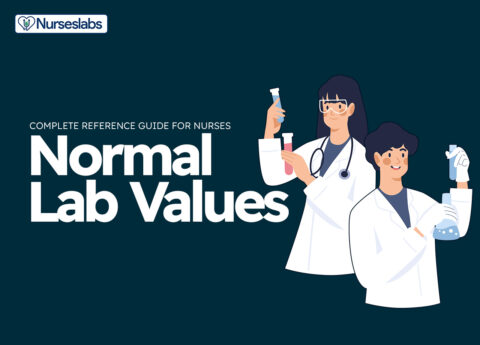






















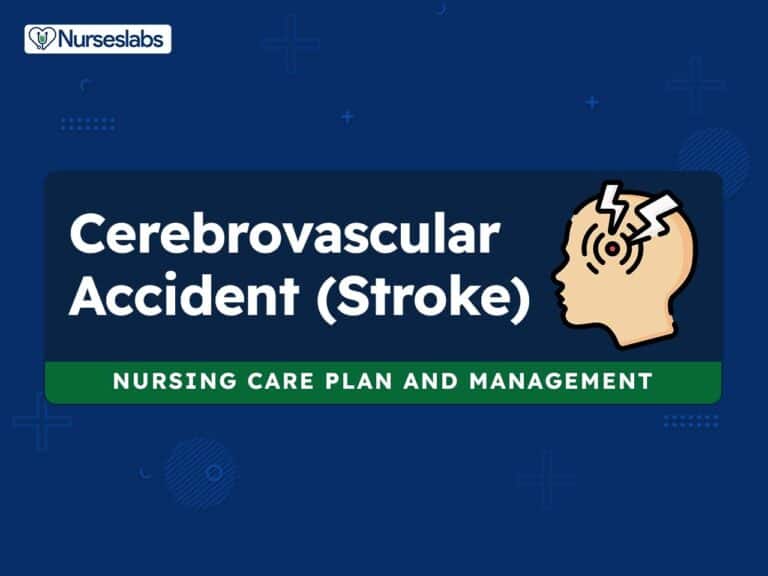
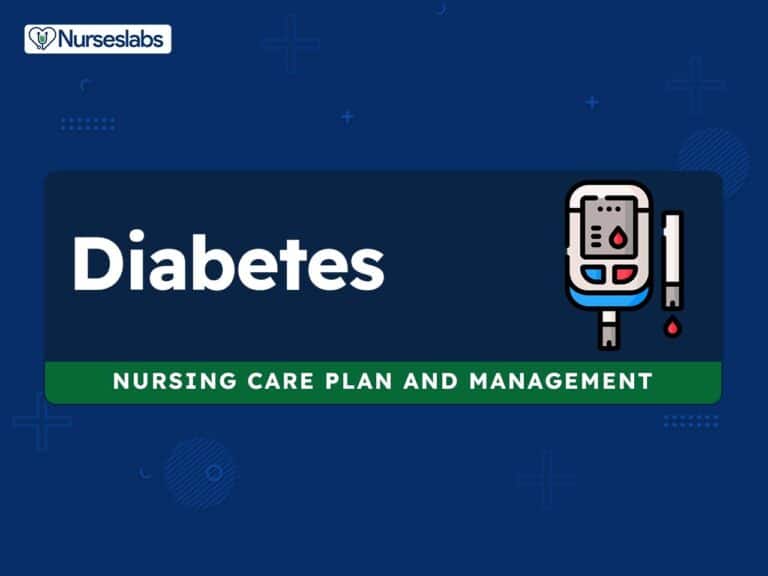
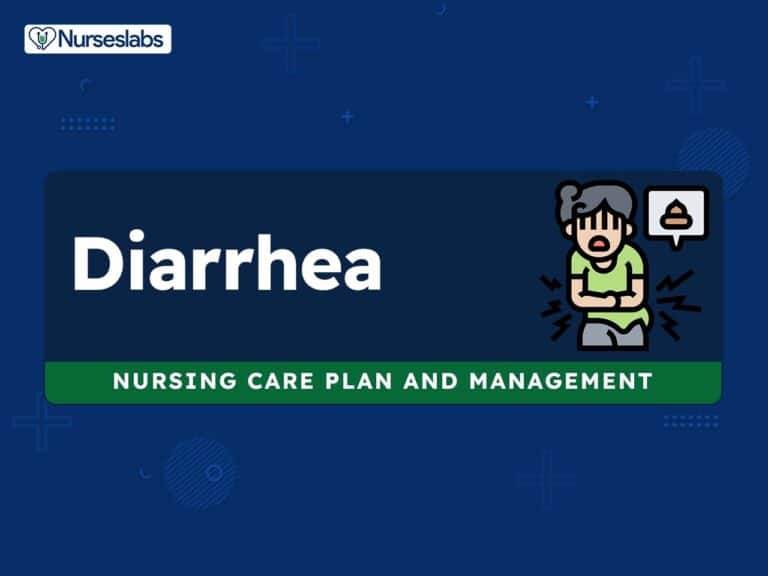
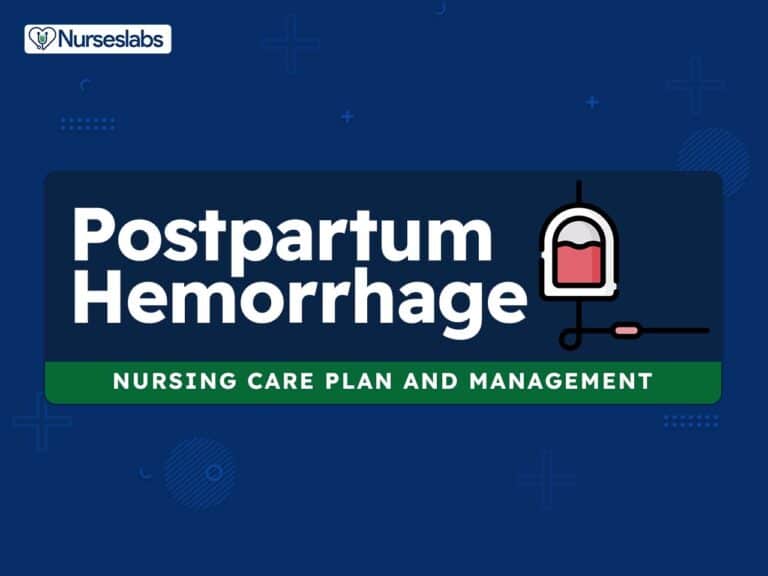

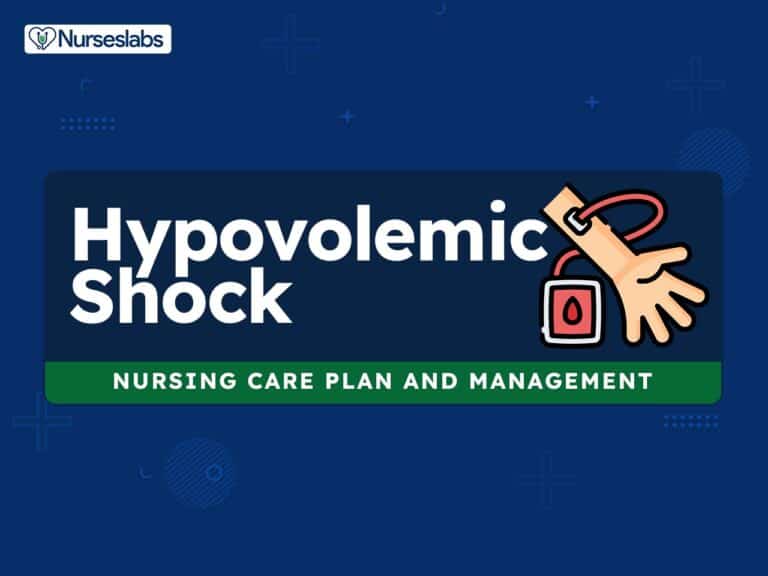


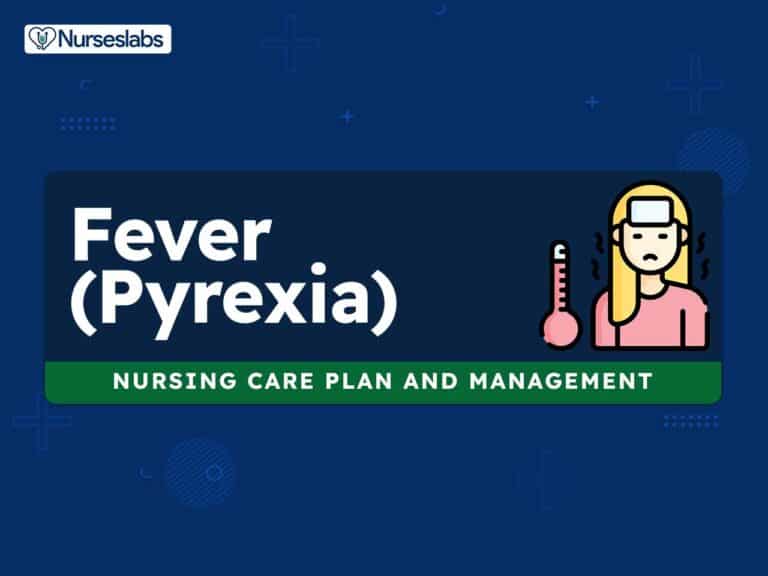


Leave a Comment